Papers by Antonio Peralta-Gómez
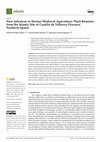
Plants, 2024
There has been a notable lack of archaeological research into the medieval period in Iberia, part... more There has been a notable lack of archaeological research into the medieval period in Iberia, particularly in comparison to earlier periods. Consequently, the majority of our current understanding of agricultural practices and plant food sources in this region is derived from textual sources. However, there has been a notable increase in interest in archaeobotanical studies in medieval contexts over the past decade. In this context, this paper presents the results of a study of plant remains from Castillo de Valtierra (Navarre), with the objective of providing insights into agricultural practices and dietary habits during the Islamic period. In this area (the Ebro Valley), the Islamic period is divided as follows: Emiral period 756–929 AD, Caliphal period 929–ca.1012 AD, Taifal period ca.1012–1119 AD. This period was followed by the Christian period from 1119 AD onwards. Samples were collected from a variety of contexts in a systematic manner. A total of 2574 remains were recovered, and 57 taxa were identified. The findings of this study demonstrate that the community that inhabited Valtierra was primarily engaged in agricultural activities and had access to a diverse range of crops sourced from various productive areas, including cereal fields, home gardens, and forests.
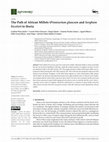
Agronomy, 2024
Pearl millet (Pennisetum glaucum) is the most widely cultivated millet in Africa and India but ha... more Pearl millet (Pennisetum glaucum) is the most widely cultivated millet in Africa and India but has not yet been identified in Europe, while the earliest remains of sorghum (Sorghum bicolor) are attested in Italy in the fifth century AD. This paper presents evidence that pearl millet was introduced to Iberia during the 11th–12th centuries AD. This is the first documented evidence for this African crop in Europe. Sorghum, on the other hand, appears as a later introduction (14th century AD) in Iberia. We present archaeobotanical data from eight Andalusi sites in Valencia and Andalucía (southern Iberia) where both crops have been found. We have also examined medieval textual data where references to pearl millet appeared to be absent, and we conclude that the word “dacsa”, currently used to refer to sorghum, should be understood as a reference to pearl millet. From the
16th century onwards, this term was given to maize, when the American cereal replaced the African millets.
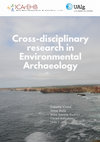
Cross-disciplinary research in Environmental Archaeology, 2024
Plants were a significant element of medieval life. They were used for many purposes other than f... more Plants were a significant element of medieval life. They were used for many purposes other than food (crafts, medicines, fodder, rituals, etc.) being central in the everyday life of medieval people. However, despite their important role in subsistence and, in general, in society, the number of Medieval sites where plant remains have been studied in Iberia is very limited. This paper wants to introduce my PhD thesis, which focuses on the role of plants in medieval society through the analysis of plant remains from archaeological contexts. I am studying several Islamic sites distributed across Iberia, to explore the range of plants that were cultivated by Islamic communities trying to understand the contribution of different productive spaces (cereal fields, forests, home gardens, etc..) to food production. Harvesting wild plants is also considered as this practice also contributed to nutrition. Given that I am in my first PhD year I will present preliminary results from some of the sites analyzed.
Periferias: desde los márgenes de la arqueología, 2023
In this paper is developed the creation and implementation of Carpology, responsable for the stud... more In this paper is developed the creation and implementation of Carpology, responsable for the study of archaeologycal seeds and fruits, but in this case in medieval sites with the case of study Mojácar la Vieja, Almería. In adittion of the analysis of the samples that were selected during the excavation and their investigation in the laboratory, for their morphologycal anf taxonomic identification.
Post-Classical Archaeologies, 2022
The Roman villa of Salar is an outstanding example of the degree of opulence and luxury that thes... more The Roman villa of Salar is an outstanding example of the degree of opulence and luxury that these residences could reach in late antiquity, with grand architectural forms ornamented with delicate frescoes, sculptural programmes and polychrome mosaic pavements. After five years of uninterrupted archaeological excavations by a research team from the University of Granada, we are now able to offer new data about its construction phases, its origin and development in the economic and social dynamics of late Roman Baetica and its postclassical epilogue as a multi-family agricultural and artisan settlement.
Book chapters by Antonio Peralta-Gómez
Memoria de actuaciones Programa Provincial de Conservación y Uso del Patrimonio Arqueológico y Paleontológico Rural 2021-2022, 2024
Resumen de los resultados de la intervención arqueológica en el castillejo de Güéjar Sierra
Conference Presentations by Antonio Peralta-Gómez
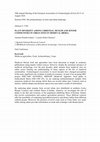
Plant diversity among Christian, Muslim and Jewish communities in urban sites in medieval Iberia, 2024
Medieval Iberian food and agriculture have been discussed at length in academic publications usin... more Medieval Iberian food and agriculture have been discussed at length in academic publications using mainly written sources. However, despite the enormous advances of medieval archaeology over the past decades, plant remains from medieval sites are rather scarce limiting our understanding of many aspects of the life of medieval communities. Archaeological excavations in recent decades have changed perceptions of the more significant role of plants in medieval economy. As part of an on-going ERC project (ERC-AdG 101054883), MEDAPP (Medieval Appetites: food plants in multicultural Iberia (500-1100 CE), we are studying archaeobotanical samples from numerous medieval sites among which there are several urban sites. Contexts such as latrines, rubbish damps and domestic spaces have provided a wealth of information.
By analyzing plant remains from several urban sites distributed in northern (León, Basque Country) and southern Iberia (Córdoba, Almería), we investigate the role of plants in the diet and economy of the population inhabiting Iberia (Christian, Islamic and Jewish communities) and explore agricultural practices. These different contexts offer the possibility of comparing agricultural practices and dietary habits from different cultural groups. Moreover, the presence of novel crops such as Citrus fruits, rice, pearl millet among others provides information on trade and exchanges with distant places.
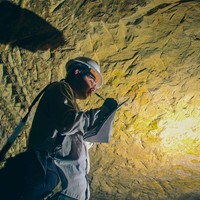
Uploads
Papers by Antonio Peralta-Gómez
16th century onwards, this term was given to maize, when the American cereal replaced the African millets.
Book chapters by Antonio Peralta-Gómez
Conference Presentations by Antonio Peralta-Gómez
By analyzing plant remains from several urban sites distributed in northern (León, Basque Country) and southern Iberia (Córdoba, Almería), we investigate the role of plants in the diet and economy of the population inhabiting Iberia (Christian, Islamic and Jewish communities) and explore agricultural practices. These different contexts offer the possibility of comparing agricultural practices and dietary habits from different cultural groups. Moreover, the presence of novel crops such as Citrus fruits, rice, pearl millet among others provides information on trade and exchanges with distant places.
16th century onwards, this term was given to maize, when the American cereal replaced the African millets.
By analyzing plant remains from several urban sites distributed in northern (León, Basque Country) and southern Iberia (Córdoba, Almería), we investigate the role of plants in the diet and economy of the population inhabiting Iberia (Christian, Islamic and Jewish communities) and explore agricultural practices. These different contexts offer the possibility of comparing agricultural practices and dietary habits from different cultural groups. Moreover, the presence of novel crops such as Citrus fruits, rice, pearl millet among others provides information on trade and exchanges with distant places.